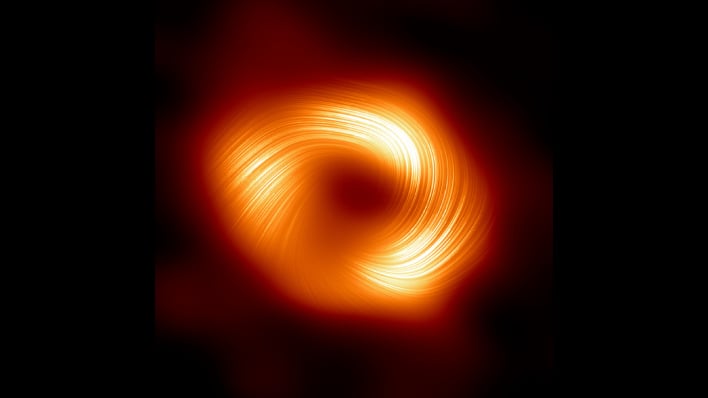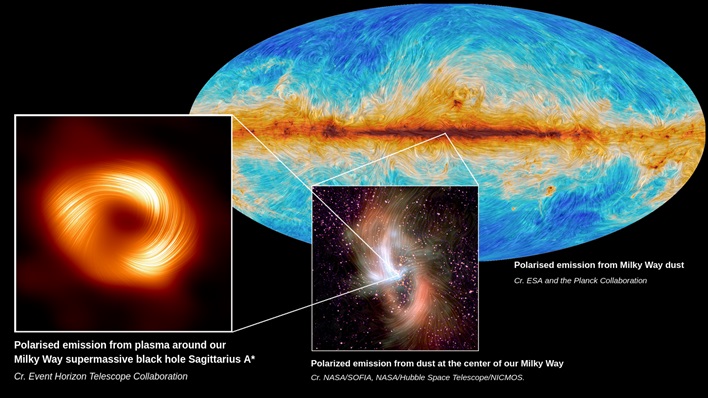New Image Of A Monster Black Hole At Center Of Milky Way Suggests It’s Hiding A Jet

The first image of Sgr A* was first shared in 2022, revealing that while the supermassive black hole was much smaller than M87’s, the two shared similarities. This led scientists and astronomers to decide to study Sgr A* in polarized light. The news of the image was shared via the Event Horizon ‘Scope’s X/Twitter account. It noted that the image provided strong evidence that strong magnetic fields may be common to all black holes, as well as hinting toward a hidden jet in Sgr A*.

“What we’re seeing now is that there are strong, twisted, and organized magnetic fields near the black hole at the center of the Milky Way galaxy,” remarked Sara Issaoun, NASA Hubble Fellowship Program Einstein Fellow at the Center for Astrophysics | Harvard & Smithsonian and co-lead of the project. “Along with Sgr A* having a strikingly similar polarization structure to that seen in the much larger and more powerful M87* black hole, we’ve learned that strong and ordered magnetic fields are critical to how black holes interact with the gas and matter around them.”
The EHT collaboration noted that polarized light surrounds all of us, but is indistinguishable to the human eye from “normal” light. However, in the plasma around black holes, like Sgr A* and M87*, particles spinning around magnetic field lines transmit a polarization pattern perpendicular to the field. This feature makes it possible for astronomers to see in vivid detail what is occurring in black hole regions, and map their magnetic field lines.
“By imaging polarized light from hot glowing gas near black holes, we are directly inferring the structure and strength of the magnetic fields that thread the flow of gas and matter that the black hole feeds on and ejects,” explained Harvard Black Hole Initiative Fellow and project co-lead Angelo Ricarte. “Polarized light teaches us a lot more about the astrophysics, the properties of the gas, and mechanisms that take place as a black hole feeds.”

Mariafelicia De Laurentis, EHT Deputy Project Scientist and professor at the University of Naples Federico II, Italy, remarked, “The fact that the magnetic field structure of M87* is so similar to that of Sgr A* is significant because it suggests that the physical processes that govern how a black hole feeds and launches a jet might be universal among supermassive black holes, despite differences in mass, size, and surrounding environment. This result allows us to refine our theoretical models and simulations, improving our understanding of how matter is influenced near the event horizon of a black hole.”
While the new image of Sgr A* has excited astronomers, they are quick to point out that they will be sifting through all the data collected looking for even more ways to compare and contrast black holes of different sizes and masses.

